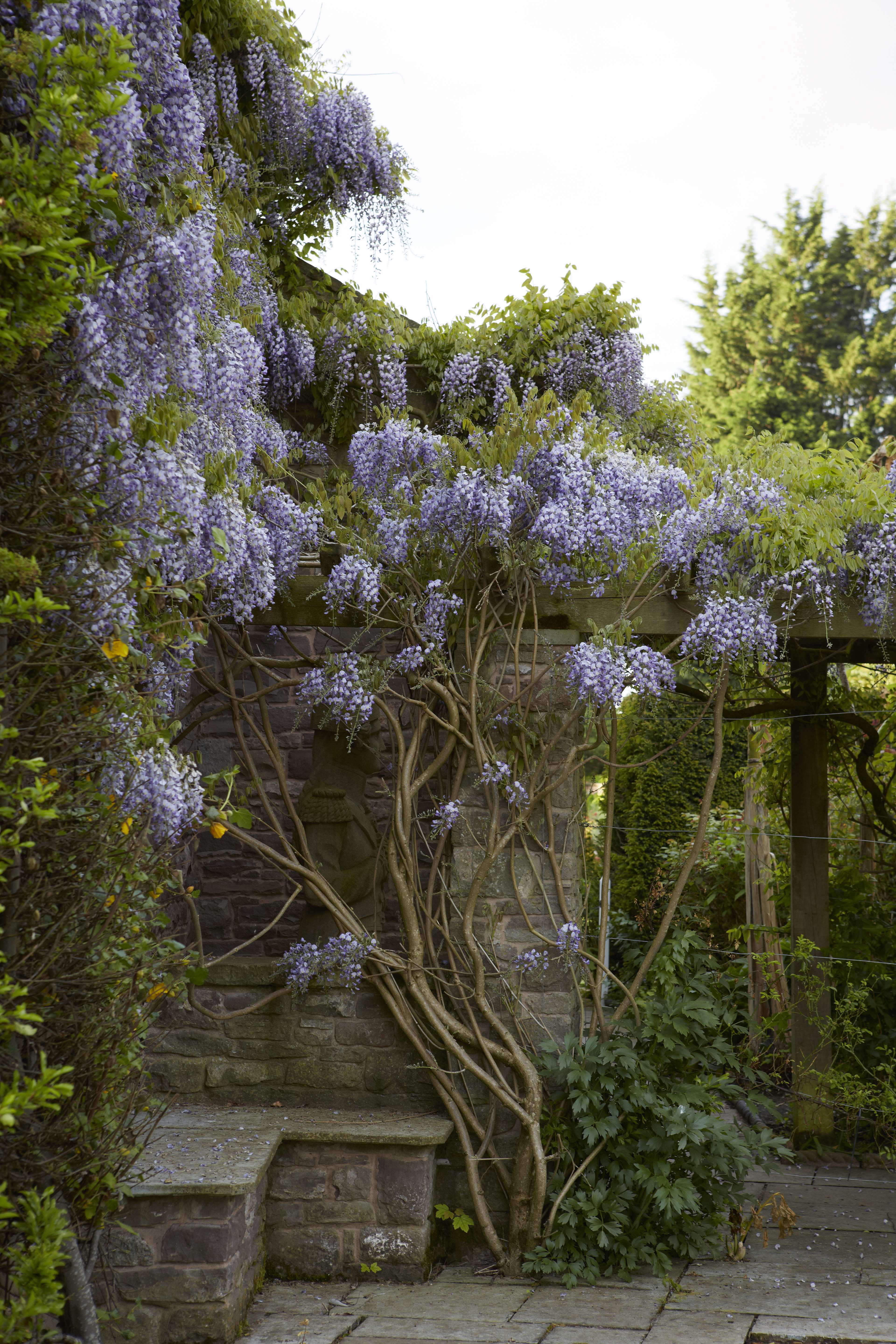The Wisteria Vine: A Spectacular Spring Bloom
The wisteria vine (Wisteria spp.) is a captivating flowering plant renowned for its cascading displays of vibrant blooms that grace gardens and landscapes across the globe. This deciduous, woody vine is a member of the Fabaceae family, which also includes beans, peas, and clover. With its rapid growth, fragrant blossoms, and ability to create stunning floral curtains, the wisteria vine has become a beloved choice for gardeners and a symbol of beauty and resilience.
A Tapestry of Varieties
The genus Wisteria comprises several species, each with unique characteristics and varying degrees of hardiness. Some of the most popular varieties include:
Japanese Wisteria (Wisteria floribunda): Known for its long, pendulous racemes of flowers that can reach up to 3 feet in length.
A Symphony of Color and Fragrance

Wisteria vines are celebrated for their spectacular floral displays, which typically occur in late spring. The flowers, which can range in color from delicate pastels like white, pink, and lavender to vibrant hues of purple and blue, are arranged in dense, drooping clusters known as racemes. These fragrant blossoms attract a variety of pollinators, including bees, butterflies, and hummingbirds, adding a vibrant touch to the garden ecosystem.
Cultivation and Care
Wisteria vines are vigorous growers and can become quite large if left unchecked. They thrive in full sun to partial shade and prefer well-drained, fertile soil. While they can tolerate a variety of soil types, they may exhibit slower growth in heavy clay soils.
Proper pruning is essential for maintaining the health and shape of wisteria vines. Regular pruning helps to control their growth, encourage flowering, and prevent them from becoming overgrown and invasive.
Training and Support
Wisteria vines require strong support structures to climb and thrive. This can include:

Trellises: Provide a framework for the vines to climb and can be customized to suit the desired shape and size of the plant.
Potential Challenges
While wisteria vines are relatively low-maintenance plants, they can present some challenges:
Vigorous Growth: Their rapid growth can be both a blessing and a curse, as it may require frequent pruning and careful management to prevent them from becoming overwhelming.
Landscaping Applications
Wisteria vines offer numerous landscaping applications, including:
Creating a Floral Canopy: Train wisteria vines over arbors, pergolas, or fences to create a stunning, fragrant canopy.
Beyond the Garden: Cultural Significance
Wisteria vines hold significant cultural and symbolic meaning in various parts of the world. In Japan, wisteria is a beloved flower, often associated with spring and renewal. It is frequently featured in traditional Japanese art forms, such as painting and poetry. In Chinese culture, wisteria symbolizes longevity and marital bliss.
Wisteria in Literature and Art
The captivating beauty of wisteria has inspired countless artists and writers throughout history.
In literature, wisteria has been featured in numerous novels and poems, often used to evoke a sense of romance, nostalgia, and springtime beauty.
Conclusion
The wisteria vine, with its breathtaking floral displays and captivating fragrance, remains a beloved choice for gardeners and a source of inspiration for artists and writers alike. By understanding its cultivation requirements and embracing its unique characteristics, gardeners can successfully incorporate this stunning vine into their landscapes, creating a vibrant and unforgettable garden experience. Whether trained to climb over arbors or allowed to cascade over walls, the wisteria vine adds a touch of elegance and enchantment to any outdoor space.